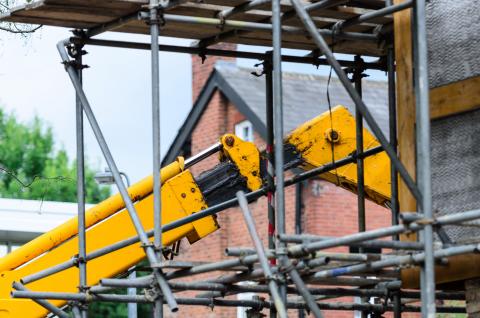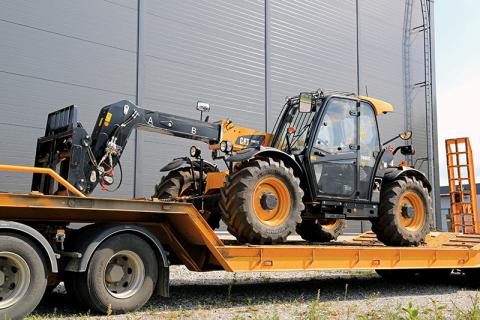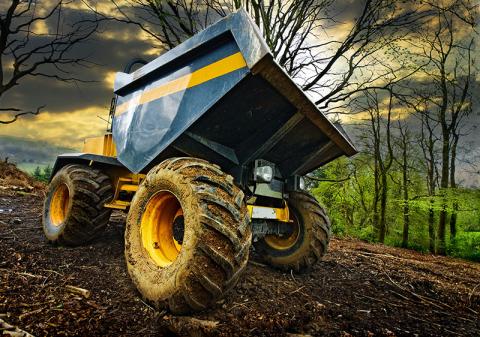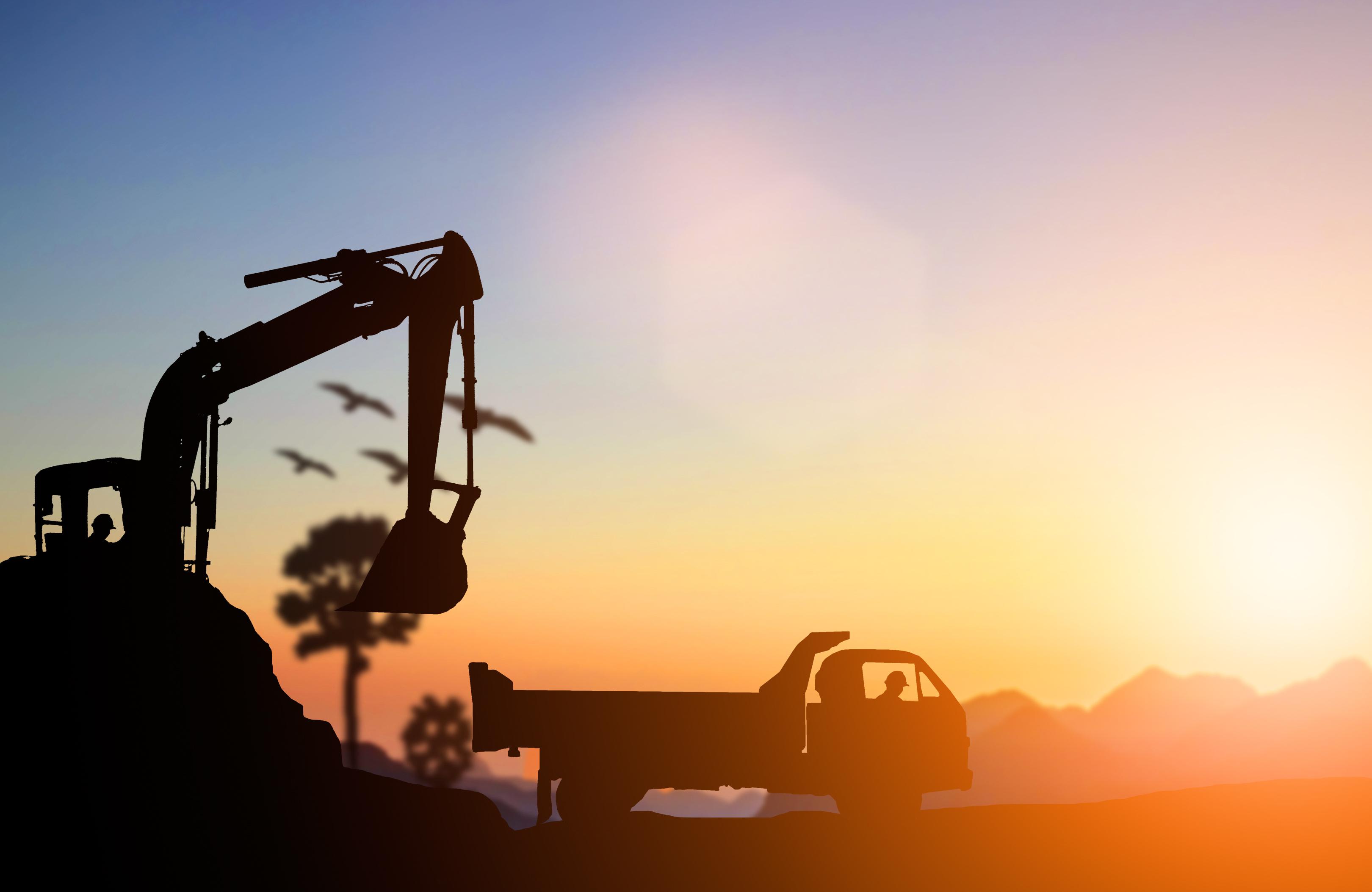Telehandlers
Telehandlers are utility lifting machines which are usually mounted on a four-wheel drive chassis and equipped with a telescopic boom which provides lift heights of 50 feet or more. Often fitted with pallet forks for lifting materials on construction sites, some telehandlers are intended to handle buckets and other attachments.
The telehandler is designed to deliver the very highest levels of performance and productivity and recognised for its manoeuvrability and versatility. Engineered for operation on some of the most extreme terrain and in a range of climatic conditions, telehandlers are often used on loading docks, scrap yards, and recycling centres.
Able to make quick directional changes, telehandlers can be fitted with custom tyres which provide enhanced traction on varying terrain. Two or four-wheel operation enables safe, effective navigation whilst supporting the various functionalities which are facilitated by an extensive assortment of attachments and accessories.

There are 3 different types of telehandler available. A standard telehandler reaches higher lift heights when compared with standard forklifts. Full weight capacities can be lifted from 18 feet to 56 feet high and popular models feature power shift transmission and all-wheel steering. Roomy, ergonomically designed cabs result in longer, more productive shifts. The machine itself is run by a single joystick which controls both the boom functions and hydraulics for simple and efficient operation.
Rotating telehandlers
Similar to a standard telehandler, rotating telehandlers have the capacity to lift heavy weights to great heights whilst offering the added benefit of 360° turntable rotation which means a wide service area can be reached from a single position. Some rotating telehandlers have two sets of joystick controls; one controls the direction and the boom whilst the second controls rotation.
Specifications of telehandlers
Four-wheel, power assisted steering is common and rotating telehandlers are usually fitted with stabilisers. A rotating telehandler deals with smaller load capacities than standard telehandlers, between 4,000 lbs and 10,000 lbs, with lift heights from 15 to 80 feet. This machine can also have a winch attachment added if needed.
Straight mast forklifts
A cross between a forklift and an RTV, a straight mast forklift can be transported on a flatbed truck. Designed for loading and unloading building materials in areas with rough terrain, straight mast forklifts can handle load capacities between 5,000lbs and 36,000lbs and offer more substantial lifting capacity at height.

This machine stands out for its manoeuvrability and accessibility, which is thanks to large heavy-duty pneumatic cushion tyres.
Specifications of telehandlers
High levels of engine power enable the vehicle to tackle a variety of terrains and heft heavy loads to great heights. The most common lift capacities range between 4,000 and 12,000lbs. Telehandlers and rotating telehandlers can reach maximum lift heights of between 18 and 97 feet.
The comfortable cab facilitates easy entrance and exit whilst also affording the operator excellent all-round visibility. Stabilisers are often mounted to the front of telehandlers which allow added weight to be lifted to the maximum lift height whilst ensuring the safety of operators during forward reach by preventing tyres from lifting off the ground. Attachments which can be added to a telehandler include forks, buckets, hooks, and truss booms amongst others.
Dumpers
A dumper is a compact construction vehicle with a front or rear-mounted skip which is used to transport construction materials from one area of a site to another. A dumper can also be used as a tractor to tow a trailer but only if equipped with a towing eye. A dumper can carry up to ten tonnes, which are usually tipped using hydraulics.
Articulated dump trucks
Unlike traditional dumpers, the articulated dump truck features an enclosed cab which tows the dump bed behind it. Due to the articulation between the cab and the trailer, articulated dump trucks benefit from a smaller turning radius which compensates for the considerable length of the vehicle itself.
Sometimes, the operator can manoeuvre the trailer from within the cab using hydraulics. Articulated trucks thrive in off-road conditions and difficult terrain whereas the rigid dump truck would struggle. However, articulation results in a reduced payload capacity.
Rigid dump trucks

Mounted on a traditional rigid chassis, rigid dump trucks offer exceptional strength and increased payload capacity. The truck has a closed cab at the front with a rearward tipping dump bed which sits on only two axles. Generally diesel-powered, a rigid dump truck is best suited to gentle terrain due to its larger turning radius and limited off-road capability.
Tracked dump trucks
Tracked dump trucks move on continuous tracks, instead of tyres, which evenly distribute the vehicle’s weight. By spreading the weight over a wider area, less damage is inflicted on the surface and the vehicle retains excellent traction on slick or snowy surfaces. Tracks can either be made of rubber or steel. Rubber is quiet, smooth and ideal for paved areas whereas steel tracks are ideal for rough ground. Though they last longer, steel tracks are noisier and offer a rougher ride.
Mini dumpers
Operators sit at the back of mini dumpers with a forward-tipping dump bed mounted in front of them. Cabs on mini dumpers are not enclosed, so they have roll bars fitted to ensure the operator’s safety should the need arise. The two axles are generally articulated somewhere between the operator and the dump bed, which eases manoeuvring in tight spaces. The skip, or dump bed, is usually tipped hydraulically and the machine typically travels on either tyres or tracks. The reduced payload capacity makes this machine more suitable for smaller operations.






